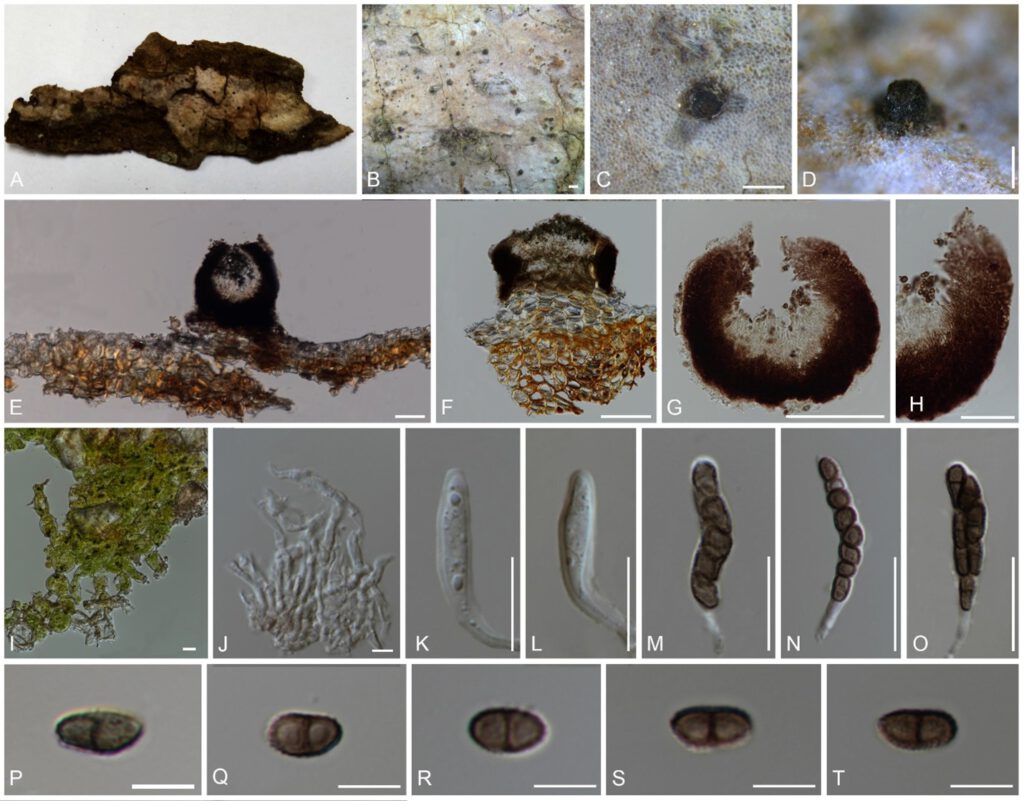Pyrgidium tibellii Thiyagaraja, Ertz, Lücking and K.D. Hyde, sp. nov. (Fig. 1)
MycoBank number: MB; Index Fungorum number: IF; Facesoffungi number: FoF 10274;
Etymology – The specific epithet “tibellii” given in the honor of Lief Tibell, who is a Swedish lichenologist, collector and specialist in Calicioid fungi.
Saprobic on bark. Thallus crustose, farinose, whitish, epiphloedal. Prothallus absent. Photobiont sparsely present on thallus, probably Treboxia. Sexual morph: Ascomata apothecial, 210–330 μm diam., 140–225 μm high, sessile, almost spherical, mazaedioid, disc black, scattered. Excipulum 40–70 μm thick, brown to black, prosoplectenchymatous, edge comprised sclerotized hyphae, edge of the excipulum turned inward in the topmost part at immature and turned outward in the topmost part at maturity, laterally gradually becoming thinner. Mazaedium filling the cavity of the fruit-body and more or less projecting beyond the excipular edge. Paraphyses 1.5–2 μm thick, septate, branched. Asci 22–40 × 3–6.5 μm (x̄ = 31 × 4.75 μm, n = 30), cylindrical, 8-spored, unitunicate, tip blunted, not narrowing towards the apex, tholus lacking, apical apparatus inconspicuous, short pedicellate. Ascospores 4.8–8 × 2.3–4.6 μm (x̄ = 6.4 × 3.45 μm, n = 40) μm, ellipsoidal, uniseriate to biseriate, overlapping, light brown to brown, 0-1-septate, septum dark brown, gattulates at immature, verrucose, irregular ridges longitudinally arranged (Fig. 6; K–P). Asexual morph: undetermined.
Material examined: Material examined: Thailand, Chiang Mai, 128 Moo3, Bahn Pa Dheng, T. Pa Pae, A. Mae Taeng, on bark of unidentified tree, 10 September 2020, Vinodhini Thiyagaraja.

Figure 1. Pyrgidium tibellii (MFLU 21-0135, Holotype). A–D, Ascomata on substrate. E, F Vertical section through Ascoma. G, H Vertical section through Exciple. I Algae. J Paraphyses. J–O Asci. P–T Ascospores. Scale bars: B = 500 μm, C, D = 200 μm, F, G = 100 μm, H = 50 μm, I = 10 μm, J = 1 μm, J–0 = 20 μm, P–T = 5 μm
